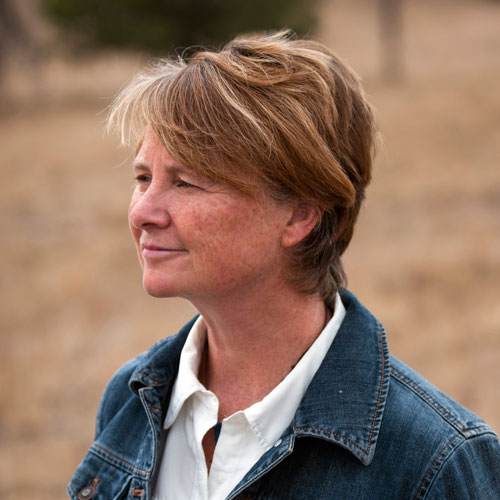It was in 2003 that Dennis Blue joined retirement-solutions firm Jackson National Life Insurance Company as its VP of corporate support services. And, it was in the following year that the business began a steady stream of building development to accommodate a growing staff that would eventually comprise more than 4,500 employees.
New offices, new data centers, renovations of existing offices, relocations—Blue has overseen the entirety of the company’s expansion over the past decade, and he’s worked at every turn to bring more warmth and life to its spaces. “It’s been my vision all along to move this company to a less sterile work environment, to something more collaborative yet providing privacy as needed,” he says. “Something that does away with the drab whites and gray of traditional financial-service [buildings].”
The main component of the expansion has been the ongoing construction of a 275,000-square-foot addition to the company’s headquarters in Lansing, Michigan. Blue’s ultimate vision for the site had to stay on hold awhile in 2008, though, when the US economy went into free fall, but while the 450 acres of Lansing farmland acquired for the addition sat undeveloped, Jackson continued its expansion through other projects. In 2011, for example, the company opened a new building in Nashville, and it also relocated its Tampa, Florida, office to a new facility. “That was our first deviation from the ‘corporate standard’—the first attempt for Jackson to attract the younger generation,” Blue says.
The work in Lansing began soon after. By 2011, Jackson’s Michigan offices were filled to capacity, and the first phase of the headquarters expansion couldn’t be postponed any longer. Blue helped the company make the decision to go ahead with plans to add a 45,000-square-foot conference center and a 10,000-square-foot dining area, both connected to the main headquarters via a temperature-controlled walkway. The new facilities were designed with green roofs, a wireless infrastructure, and more open areas and collaborative space, and the entire project was scheduled to wrap by fall 2015. “The informal meeting space will feel like you’re out in the middle of the woods,” Blue says. “It’s a very cool setting.”
Getting everyone to agree on the vision for the expansion proved relatively easy, Blue says, because Jackson’s top executives were already in line with his team’s way of thinking. “The C-Suite had given a lot of positive feedback for the other sites that we’d built out and were on board with where we were heading,” he says. “Sometimes, though, we had to guide them away from ideas … such as that it made the most sense for the C-Suite to occupy the newer building [once completed].” The executives ultimately stayed put, which made the most logistical sense to Blue.

Work on the expansion began in late 2012 with the hiring of the construction manager and the commissioning agent, and the former was involved with the subsequent interviewing of the project’s architect and its engineering firm. “It sounds really backwards,” Blue says, “but we felt the construction manager was as important a piece of the process as the commissioning agent for keeping the architect and engineer on track. I couldn’t have completed a project of this size without the drive from team members Tim Dooling, director of facilities management, and Greg Farhat, director of workplace strategies and delivery.”
Having a solid team proved important early in the building process, when an unusually cold winter froze the soil as deep as seven feet and teams had to employ wrecking balls to soften the ground before foundations could be poured. The fact that the property was old farmland was a challenge as well, and Blue says “a lot of undercutting” was needed to get a compact, supportive soil on which to build. Factor in the fact that the project’s architect was slow on delivering some of the construction documents, and the value of the construction manager was clear from beginning to end, especially when it came to adjusting the overall production schedule.
“For the conference center, this was a huge challenge but more of a personnel thing,” Blue says. “For the new building, it’s working out very well. One of our big driving points [with this project] is that we’re not paying for overtime, so [the subs] need to figure out how to make it work.”
Blue recalls the construction manager coming to his team with six-figure change orders based on overtime requirements and acceleration. “We pushed back on pretty much every one of them,” he says, “and told them they needed to push the subs to get that work done.”
And with the MVP partners adhering to guaranteed-maximum-price contracts, Blue’s team also pushed them to premanufacture and assemble things at their own shops—“not an unusual request, since one of the things we asked during the interview process was ‘what do you build in-house?’” Blue says.

One problem the project team didn’t anticipate was the steel subcontractor having trouble locating all the steel it needed; only after scouring multiple Midwestern steel mills was the subcontractor able to find the sizes necessary to continue. “The completion of the conference center [in November 2014] was about a month late,” Blue says. “But a little effort on their part saved us a lot of money on the back end.”
Jackson also completed the relocation of its El Segundo, California, affiliate offices in 2014. With that project, the additions at Lansing, and other recent changes to the company’s sites, Blue and his team are well on their way to providing employees with warmer, more collaborative work environments.


